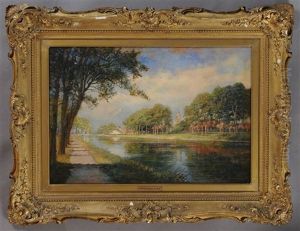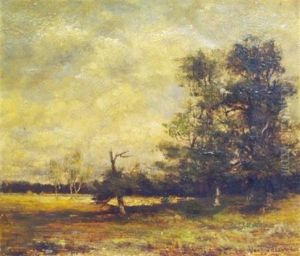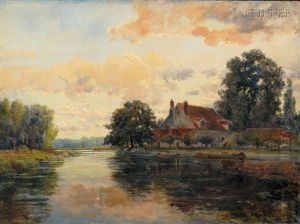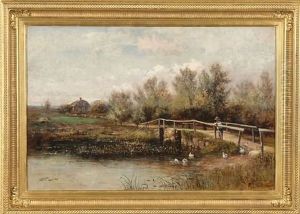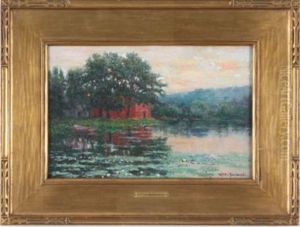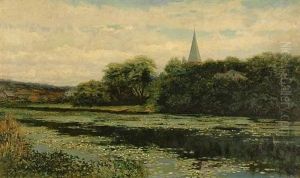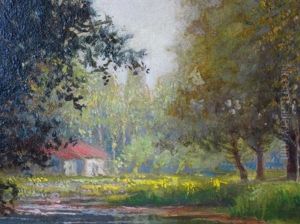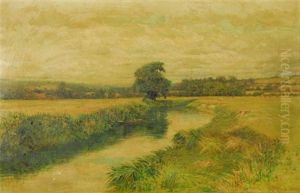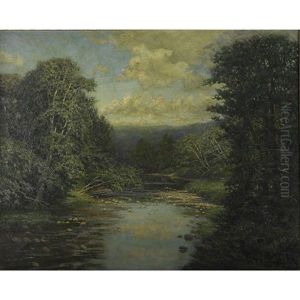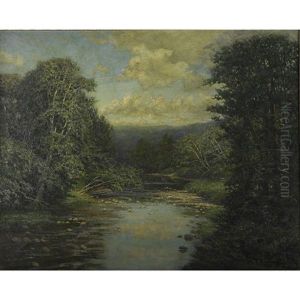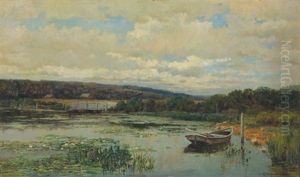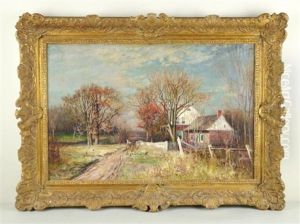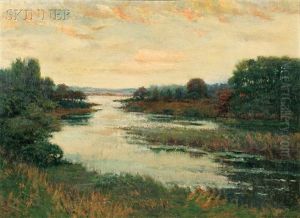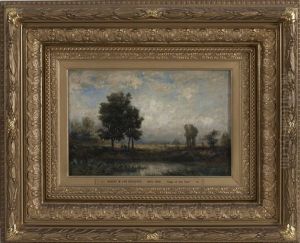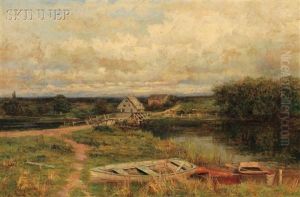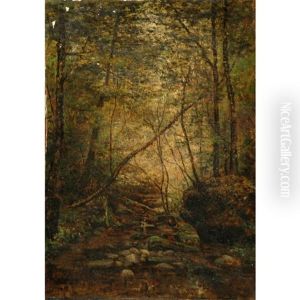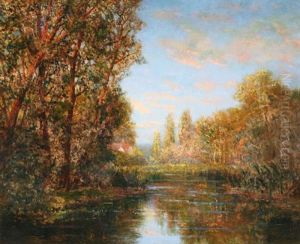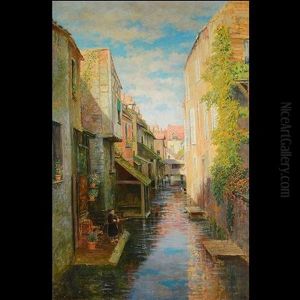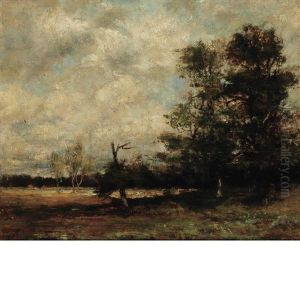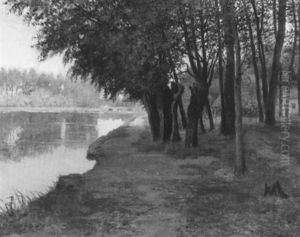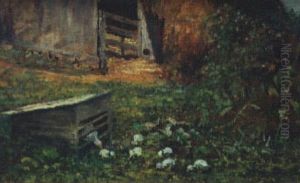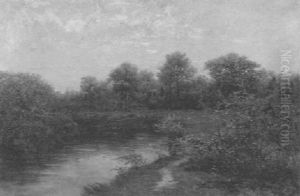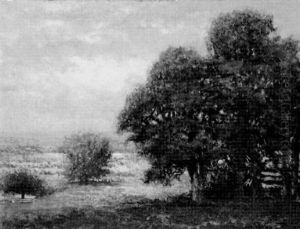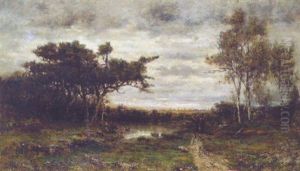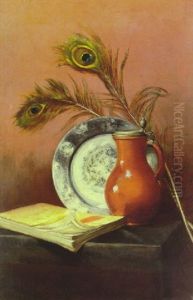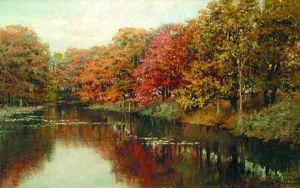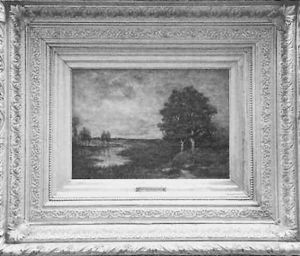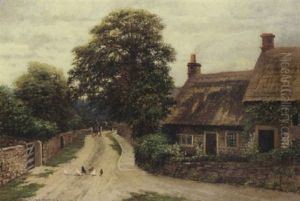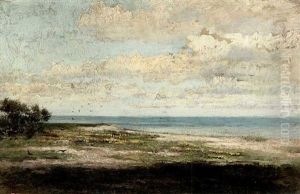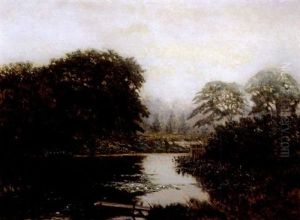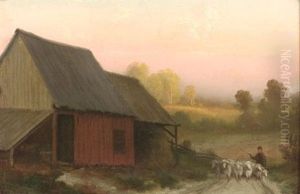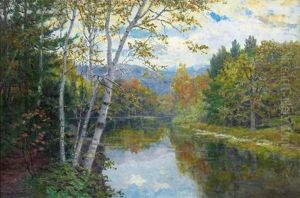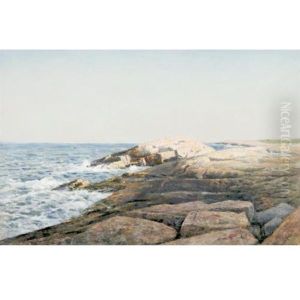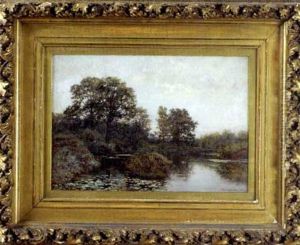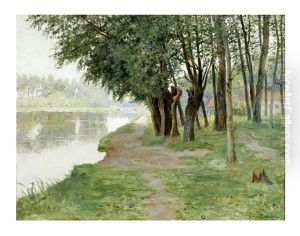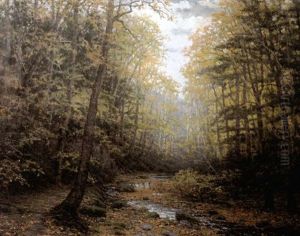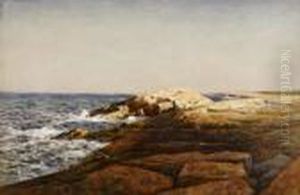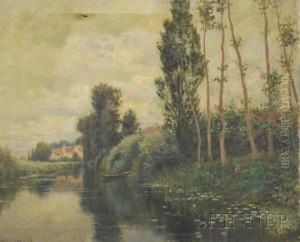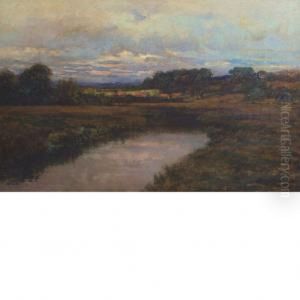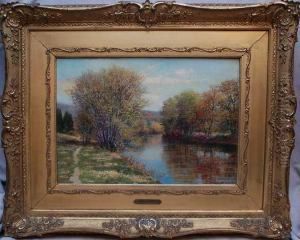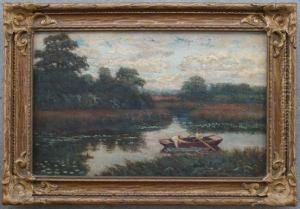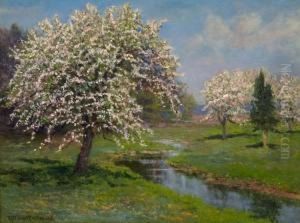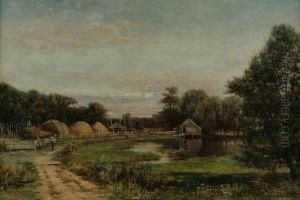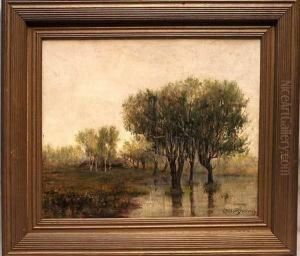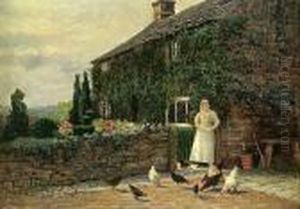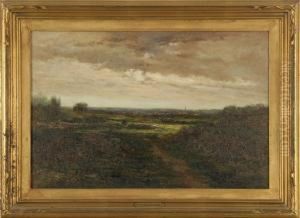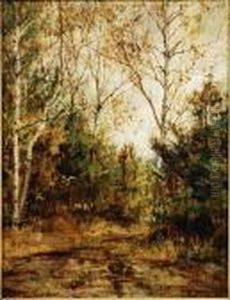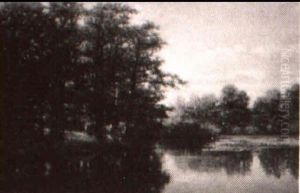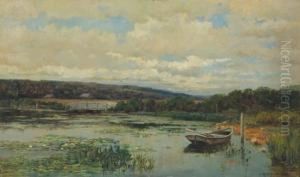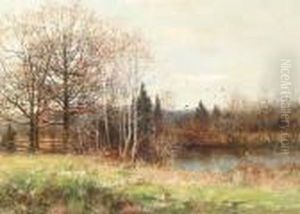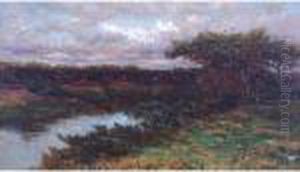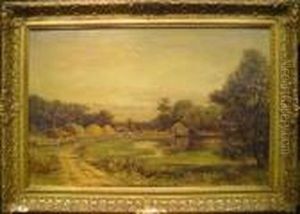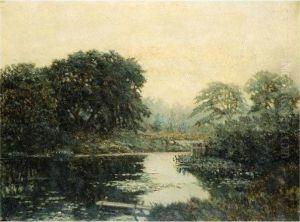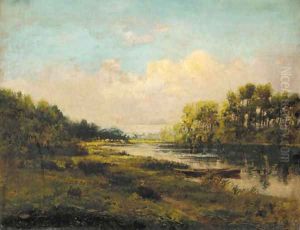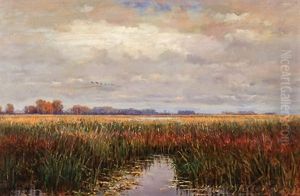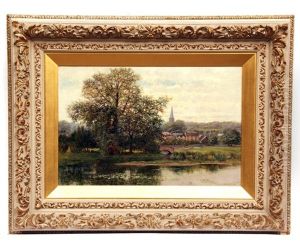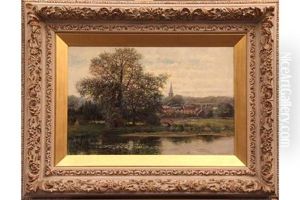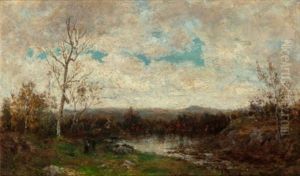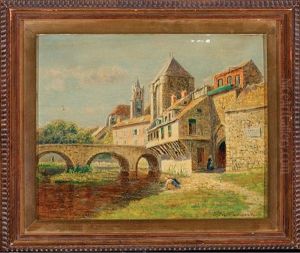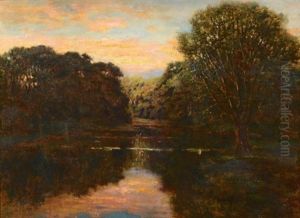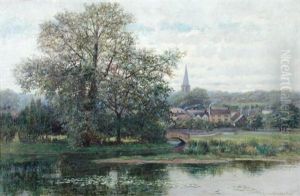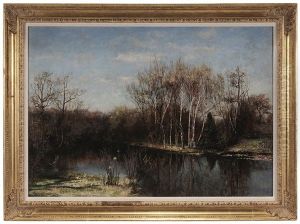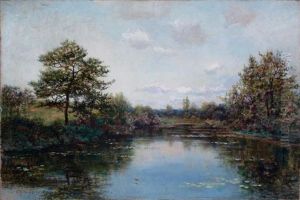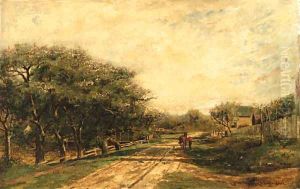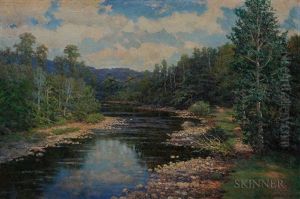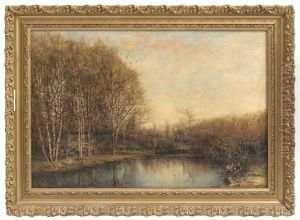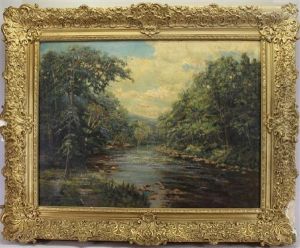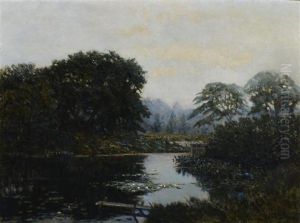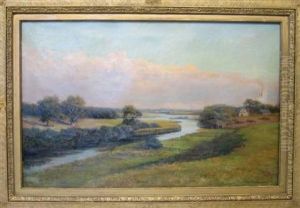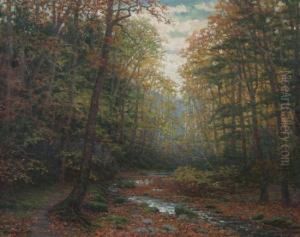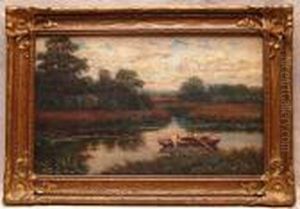Robert Ward Van Boskerck Paintings
Robert Ward Van Boskerck was an American landscape painter who is most noted for his serene and idyllic depictions of the American countryside, particularly in the impressionist style that gained prominence towards the latter part of the 19th century. Born in 1855 in New Brunswick, New Jersey, Van Boskerck grew up in an era where the American art scene was beginning to establish its own identity, moving away from the strong European influences that had dominated it during the early 19th century.
Van Boskerck's career as an artist began after his education, during which he was significantly influenced by the Hudson River School, a mid-19th century American art movement embodied by a group of landscape painters whose aesthetic vision was influenced by romanticism. However, as his style evolved, it became more aligned with the impressionist movement, which emphasized light and its changing qualities, ordinary subject matter, and movement as crucial elements of human perception and experience.
Throughout his lifetime, Van Boskerck achieved considerable success and was recognized by his peers and art critics alike. He was a member of various prestigious art organizations, including the National Academy of Design, where he was elected as an associate member in 1903, and later a full academician. His works were exhibited in numerous exhibitions, and he received several awards for his contributions to American art.
Van Boskerck's paintings are characterized by their vibrant colors, light portrayal, and tranquil scenes that often depicted the lush landscapes of the northeastern United States. Through his work, he captured the beauty and serenity of the American landscape, contributing to the country's growing appreciation for its natural scenery during a period of rapid industrialization and urbanization.
Robert Ward Van Boskerck passed away in 1932, but his legacy lives on through his paintings, which continue to be celebrated for their contribution to American impressionism and their ability to capture the essence of the American spirit through the lens of the natural world. His works are held in several prominent collections and museums, serving as a testament to his skill and vision as an artist who was able to beautifully meld the techniques of impressionism with the unique characteristics of the American landscape.
